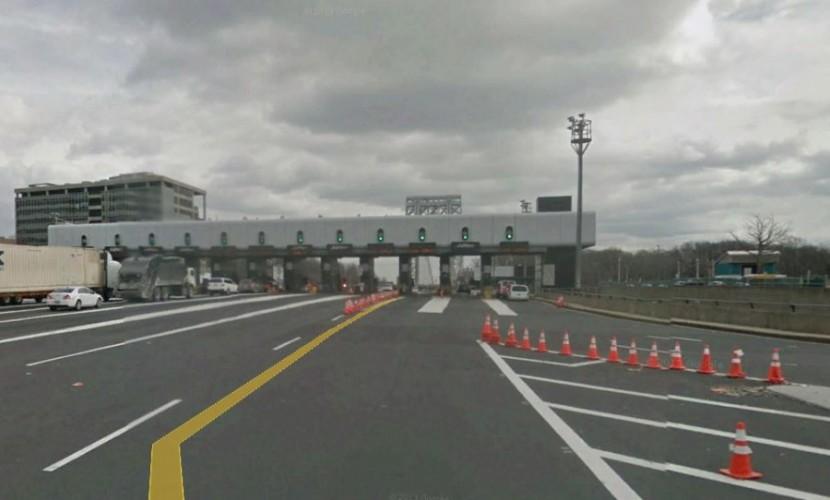Exactly what part of NJ is tidal, anyway?
Watching Steve Kornacki on Up this morning I was struck by the ignorance that still surrounds what happened during Hurricane Sandy to NJ, NY and Connecticut communities North of “the Shore”. I began to shout at my TV. The Republican legislator on the Bridgegate investigatory committee thought the $342,000 that went to Hoboken was plenty of money because, as he put it, Hoboken “did not experience a tidal surge”. Au, contraire.
The problem is, because of the Stronger Than the Storm ads, people outside New Jersey and even apparently inside it (legislators yet) think that Hoboken got their fair share of Sandy aid. They mistakenly think communities north like Hoboken were just dealing with a little rain, even though their shorelines are also washed by tides from the Atlantic.
Jersey Shore North
I have written about my experience and what I witnessed as far north as Piermont New York, many many miles north of Hoboken in the immediate aftermath of Sandy. The Hudson is tidal which is why the Lenape called it “the River that Runs Both Ways”. As someone who regularly sails the Hudson, you need to appreciate the tides or you will decide to go out for a little sail from Alpine or Piermont NY and either need a ladder to reach your boat far below the dock or have to jump up a few feet. If you time it wrong, you will be fighting the tides coming and going. The Hudson River estuary and ocean tide actually reach as far north as Troy New York. During Sandy, residents in tiny Piermont New York above the NJ state line had to contend with boats dry docked at the marina slamming into their modest homes tucked below the Palisades. They were literally between a rock and a hard place. So, I assure you, when Sandy hit, the tidal surge went all the way up to New York state. The Jersey portion certainly included Hoboken.
Boardwalk North
It was also interesting that the Legislator on Up mentioned the Walkway in Hoboken. I am a former trustee of the Hudson River Waterfront Conservancy, the entity tasked with completing the Walkway. I co-wrote and narrated a video in 2004 produced by the HRWC about the creation of the walkway and the issues of trying to get it completed. That walkway is to Hudson County, what the Boardwalk is to Seaside. It is a critical part of the infrastructure and a major quality of life amenity for the residents of crowded Hoboken. It was also devastated by Sandy because it is right against the Hudson River. It was the only thing between the city and the tidal surge during Sandy. It is criminal that no aid was given for the reconstruction of the Hudson River Walkway while the Boardwalk is being rebuilt twice. Christie actually vetoed a bill that would have provided funding. There is no hope of getting it brought up again either even though New Jersey’s coastline extends to the New York State Line.
I don’t have anything against rebuilding the Boardwalk, but The Walkway is basically Boardwalk North for even more year-round residents of the state of New Jersey. To give Hoboken just over $342,000 – which is not even enough money to buy just one house in northern New Jersey, is a blatant slap right across the face. The legislator’s comments about the pump Hoboken needed displays his ignorance of the topography and the nature of the damage to Hoboken. The pumps needed are equivalent to pumping out New Orleans. Much of the city of Hoboken is below sea level although there is a high bluff near the River behind the walkway and massive Train station which was badly flooded and unusable for months. Many of the businesses are located near the train station at this lower elevation as well. The water smashed the Walkway, entered the massive and historic Hoboken train station, came around both sides of the high ground area and filled in the bathtub behind the bluff. The only way to get rid of that water was to pump it out. The narrow streets littered with submerged cars made getting emergency vehicles down the street nearly impossible. Hence the need for the national guard to rescue folks. I won’t even get into the fact that the sewage station was flooded and made the misery all that much more of a health disaster. Hoboken may not have been down the shore, but the disaster had shades of Katrina just the same.
Green Rebuilding and Recovery
On October 8th, I was invited to a conference in Hoboken at Stevens Institute of Technology, the College campus situated on that bluff in Hoboken known as Castle Point. The official title of the conference was “New Jersey’s Lower Hudson River Waterfront 25 years of Construction: Challenges for the Next 25 Post Sandy Era, A Conference to Address Waterfront Sustainability”. I took the train there – and the station was still under construction. I walked along the walkway to get to the conference, and I was still struck, nearly one year after Sandy how much evidence of the damage was present. I wasn’t even in the bathtub area where the worst flooding took place, I was just looking at the shoreline.
The event was sponsored by The Hudson River Waterfront Conservancy of NJ, Inc. and Stevens Institute’s Davidson Laboratory/Center for Maritime Systems, but it was a who’s who of Green Building design and worldwide flood management experts from Holland, and officials from Washington DC. The guest Speaker was Chris Daggett, former Commissioner of the NJDEP, who ran for Governor against Chris Christie. Also present were members of Dawn Zimmer’s Administration to talk about their plans for rebuilding in Hoboken with an eye toward protecting from future storms. As a stormwater engineer I knew exactly what Zimmer’s plan meant. Her administration is on the cutting edge of the latest thinking in smart city planning and stormwater management. Not many cities in NJ are as up on this. Too often, big builders do things the way they always have, but we now know the old ways do not work anymore. We need to not only protect Hoboken’s lowlands from future tidal surges, we need to find ways to reduce stormwater runoff inside the bathtub. To do that we need smart buildings. Zimmer and her team have a tremendous opportunity here to get it right.
Often when a site is an eyesore or a disaster, or a stormwater runoff generator, the only chance a town has to fix the problem is when redevelopment occurs and the property owner comes in for a building permits. The Town should work with the builder to ensure that the project meets the master plan for the whole community. They only get one crack at it – when construction is about to happen. It appears that the area in question in the new allegations against the Christie Administration is at stake here. The City of Hoboken has a comprehensive plan in place that includes development, but development in line with the Master Plan and protection from future storms.
The Mayor’s Complaint
The Mayor’s outrage is understandable if she believed that the Governor’s office was trying to paint her as anti-development in order to dismiss her concerns about the Rockefeller property and to deny Sandy funds that are sorely needed to implement the plan. Too often in NJ, powerful interests just want to work the way they have always done things and build whatever they want regardless of the towns input. For many years, even though the developers along the Hudson were supposed to give waterfront plans to the HWRC to review, we often only found out about them too late. Which is why a lot of the Walkway was difficult to implement properly. But now that even the builders recognize the value of the Walkway and tout access to it in their real estate brochures, it is easier. Now, because of it, all the land in Hoboken is actually worth more than when it was a sad broken town made famous in the movie On the Waterfront.
The horrific damage done to Hoboken by Sandy and the history of the Real Estate tug of war along the Hudson make the allegations against the Christie Administration particularly upsetting to North Jersey residents who treasure Hoboken now.
Putting the Dollars in Perspective
The claim from the Christie Administration that Hoboken got just as much as other communities across the state makes as much sense as sending more Homeland security funds to a town of 2000 in the heart of Kansas rather than sending it to New York City. The reason the Feds are now looking into the Christie Re-election campaign may turn up more information if Sandy funds were used not where they were needed but spread around the state to friends.
The non-transparency of how the funds were distributed and Christie’s veto of a bill that would have provided the same kind of funds to Hudson shoreline in Hoboken damaged by Sandy that the shore received raises all kinds of questions and suspicions because Christie needed votes from all across the state for re-election. Sandy actually spared at least 2/3 of the state. Sandy was mainly a tidal surge event and did not even have hurricane force winds when it hit. However, that tidal surge concentrated as it funneled up the Hudson. The surge did not affect all 21 counties equally, but only the 8 counties along the coast, and only the portions of these near the water – Bergen, Hudson, Union, Middlesex north of the bay, and Monmouth, Ocean, Atlantic, Cape May on the ocean and low lying parts of Essex county along the Passaic or Hackensack Rivers. The number of buildings damaged in Hoboken was over 1700. These were not shore bungalows, but multistory, crowded apartment buildings. For 5 days 500 million gallons of Seawater drowned 80% of Hoboken. All three of Hoboken’s electrical substations were flooded bringing down the grid for days. The city only had one pump capable of dealing with 50 million gallons per day. The monetary damage from Sandy to both residences and businesses in Hoboken as well as the public infrastructure, in one of the most densely populated cities in the United State which had $10 billion dollars of ratables, was immense.
For more information about Hoboken, why it flooded during Sandy, and what the City plans to do about it, here is a link to the Newsletter from Fall 2013 that explains it in detail.



